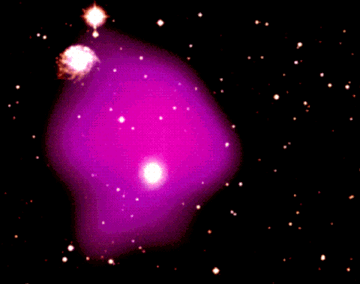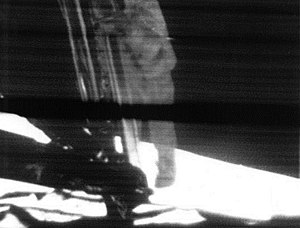A moon landing is the arrival of a spacecraft on the surface of the Moon. This includes both manned and unmanned (robotic) missions. The first human-made object to reach the surface of the Moon was the Soviet Union's Luna 2 mission on 13 September 1959. The United States's Apollo 11 was the first manned mission to land on the Moon on 20 July 1969. There have been six manned U.S. landings(between 1969 and 1972) and numerous unmanned landings.
Friday, June 15, 2012
Tuesday, June 12, 2012
Monday, June 11, 2012
Alien Spaceships Coming To Earth In November 2012 - True Or False?!
 Three giant alien spaceships are again heading for Earth! Scientists predict the new ships will arrive in November of 2012.
Three giant alien spaceships are again heading for Earth! Scientists predict the new ships will arrive in November of 2012.
UFO encounters continue to increase – as documented on WWN. And today scientists at SETI (Search for Extraterrestrial Intelligence), an independent non-commercial organization, made a major announcement:
“Three giant spaceships are heading toward Earth. The largest one of them is 200 miles wide. Two others are slightly smaller. At present, the objects are just moving past Jupiter. Judging by their speed, they should be on Earth by the fall of 2012,” said John Malley, the lead extraterrestrial expert at SETI.
Saturday, June 9, 2012
Our Solar Sistem...
 The Solar System consists of the Sun and the astronomical objects gravitationally bound in orbit around it, all of which formed from the collapse of a giant molecular cloud approximately 4.6 billion years ago. The vast majority of the system's mass is in the Sun. Of the many objects that orbit the Sun, most of the mass is contained within eight relatively solitary planets whose orbits are almost circular and lie within a nearly flat disc called the ecliptic plane. The four smaller inner planets, Mercury, Venus, Earth and Mars, also called the terrestrial planets, are primarily composed of rock and metal. The four outer planets, the gas giants, are substantially more massive than the terrestrials. The two largest, Jupiter and Saturn, are composed mainly of hydrogen and helium; the two outermost planets, Uranus and Neptune, are composed largely of ices, such as water, ammonia and methane, and are often referred to separately as "ice giants".
The Solar System consists of the Sun and the astronomical objects gravitationally bound in orbit around it, all of which formed from the collapse of a giant molecular cloud approximately 4.6 billion years ago. The vast majority of the system's mass is in the Sun. Of the many objects that orbit the Sun, most of the mass is contained within eight relatively solitary planets whose orbits are almost circular and lie within a nearly flat disc called the ecliptic plane. The four smaller inner planets, Mercury, Venus, Earth and Mars, also called the terrestrial planets, are primarily composed of rock and metal. The four outer planets, the gas giants, are substantially more massive than the terrestrials. The two largest, Jupiter and Saturn, are composed mainly of hydrogen and helium; the two outermost planets, Uranus and Neptune, are composed largely of ices, such as water, ammonia and methane, and are often referred to separately as "ice giants".Friday, June 8, 2012
Dark Matter...
In astronomy and cosmology, dark matter is a type of matter hypothesized to account for a large part of the total mass in the universe. Dark matter cannot be seen directly with telescopes; evidently it neither emits nor absorbs light or other electromagnetic radiation at any significant level.


Thursday, June 7, 2012
Halley's Comet...

Halley's comet is named after Edmond G. Halley who was the first to suggest that comets were natural phenomena of the solar system, in orbit around the Sun. He suggested that a certain comet was a regular visitor, returning every 76 years, and was, in fact, the same one which had been observed since 240 BC, but in particular in the years 1531, 1607, and 1682, dates which for him were recent history. In 1682 he predicted the comet would return again in 1758, and sure enough, the comet arrived in March 1759. Halley's comet made a particularly bright appearance in 1910. It also was recorded in a famous ancient tapestry after its 1066 appearance.
Tuesday, June 5, 2012
What's in the heart of a comet?
A comet's nucleus, or heart, is the solid chunk of something in the center of its fuzzy coma. As it approaches the Sun, some of its surface boils off and creates a long tail.
But what IS inside a comet's nucleus?
Marshmallows? Chewy caramel? Nuts?
Here is what scientists have found out.

Comets...

A comet is an icy small Solar System body (SSSB) that, when close enough to the Sun, displays a visible coma (a thin, fuzzy, temporary atmosphere) and sometimes also a tail. These phenomena are both due to the effects of solar radiation and the solar wind upon the nucleus of the comet. Comet nuclei range from a few hundred meters to tens of kilometers across and are composed of loose collections of ice, dust, and small rocky particles. Comets have been observed since ancient times and have traditionally been considered bad omens.
Monday, June 4, 2012
Space Shuttle Replica is 'Go' for Docking in Houston Lake
A full-scale replica of a NASA space shuttle will come into dock Friday (June 1), but rather than pull into a space station, it will arrive at port in a Texas lake near the space agency's Houston space center.
The high-fidelity space shuttle mockup, which was known as "Explorer" for the 18 years it was at NASA's Kennedy Space Center Visitor Complex in Florida, will sail into Houston's Clear Lake to a dock opposite the Johnson Space Center, where it will be offloaded for display.
The replica left the Florida spaceport on May 24 atop an open-air, flat-bed barge and has since been making its way around the Florida peninsula and through the Gulf of Mexico. It entered Galveston Bay on Thursday (May 31).
Lunar Eclipses: What is a Total Lunar Eclipse & When is the Next One?
Lunar eclipses occur when Earth's shadow blocks the sun’s light, which otherwise reflects off the moon.
The most recent lunar eclipse was Monday, June 4, 2012. The next lunar eclipse is Nov. 28, 2012. There are three types, with the most dramatic being a total lunar eclipse, in which Earth’s shadow completely covers the moon. Throughout history, eclipses have inspired awe and even fear, especially when total lunar eclipses turned the moon blood-red, an effect that terrified people who had no understanding of what causes an eclipse and therefore blamed the events on this god or that. Below, you’ll find the science and history of lunar eclipses, learn how they work, and see a list of the next ones on tap.
This montage of images taken by skywatcher Kieth Burns shows the Dec. 20, 2010 total lunar eclipse. The photos won a NASA contest to become an official NASA/JPL wallpaper for the public.
The 5 Strangest Facts About Venus
 |
| Magellan spacecraft radar data enabled scientists to penetrate Venus' thick clouds and create simulated views of the surface. |
Venus, the second planet from the sun, is an oddity in many ways.
With this week's ultra-rare transit of Venus, in which the planet will pass in front of the sun as seen from Earth on Tuesday (June 5), we here at SPACE.com think it's a great time to take a look at the peculiar quirks of one of our closest neighbors in the solar system.
Here are the top five ways we think Venus is weird.
Hubble Telescope May See Rare Transit of Earth in 2014
Tomorrow's historic transit of Venus across the sun's face has astronomers and skywatchers abuzz, but how spectacular would it be to see our own planet silhouetted against the solar disk?
Venus will pass in front of the sun from Earth's perspective on Tuesday (June 5; Wednesday, June 6, in much of the Eastern Hemisphere), marking the last suchVenus transit until 2117. However, there's a chance to observe an Earth transit less than two years from now using a little creative thinking, some researchers note.
How to Safely Watch the Transit of Venus on Tuesday
Many people are planning to watch the transit of Venus on Tuesday (June 5), but it's extremely important that prospective viewers be warned to take special precautions (as with a solar eclipse) to view the silhouette of Venus against the brilliant disk of the sun.
For the United States and Canada the transit will begin when the dark disk of Venus first touches the outer edge of the sun, an event that astronomers call Contact I. From the Eastern U.S. and Eastern Canada, Contact I should occur around 6:03 p.m. EDT (2203 GMT). From the Western U.S. and Western Canada, Contact I should occur around 3:06 p.m. PDT.
What Earth Looks Like From Venus During Rare Sky Show
There is no question that countless numbers of people will be watching the transit of Venus on Tuesday; a very striking celestial phenomenon that has been seen only once in the last 129 years and won't happen again until December in the year 2117.
But as we prepare to watch the planet cross the face of the sun from our Earthly vantage point, have you ever wondered what the view would be like if we were o Venus? Obviously, that answer would be "what view?" since Venus is cloaked with a perpetual overcast.







